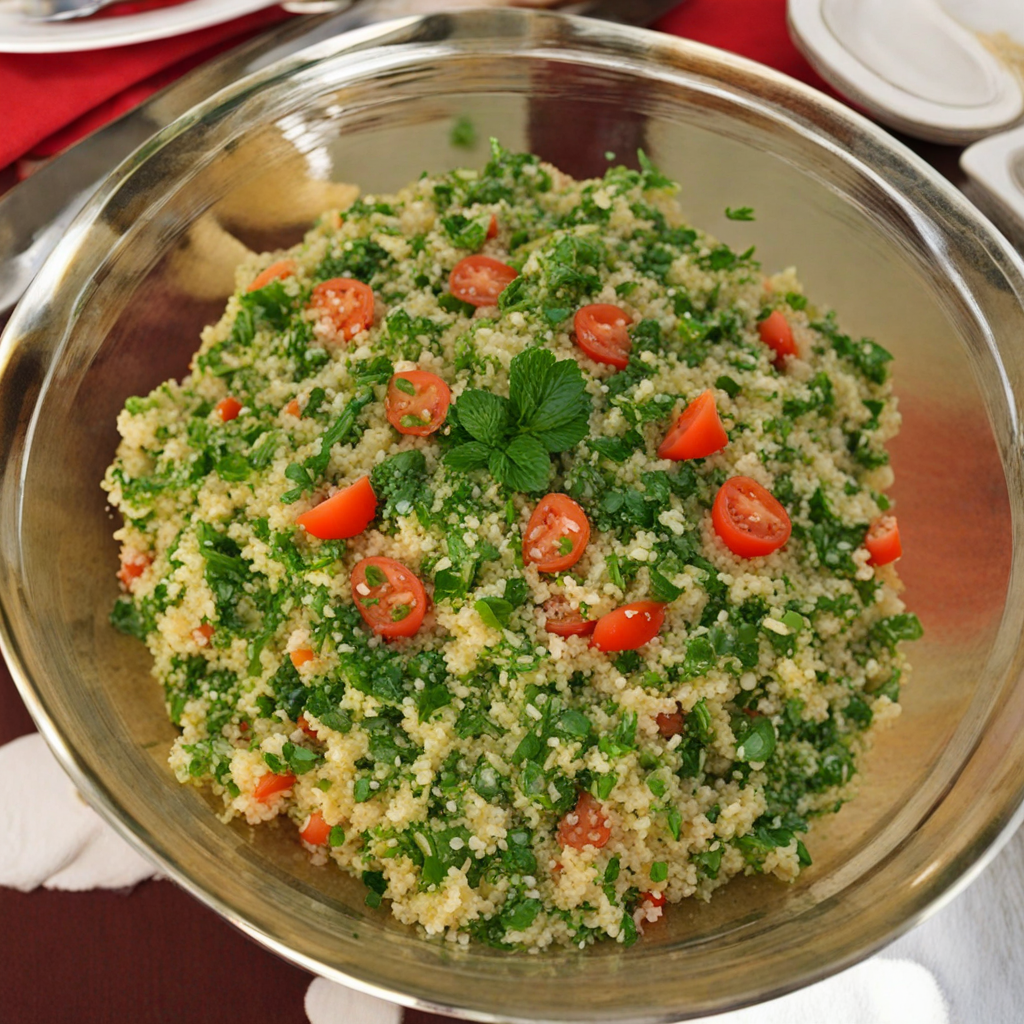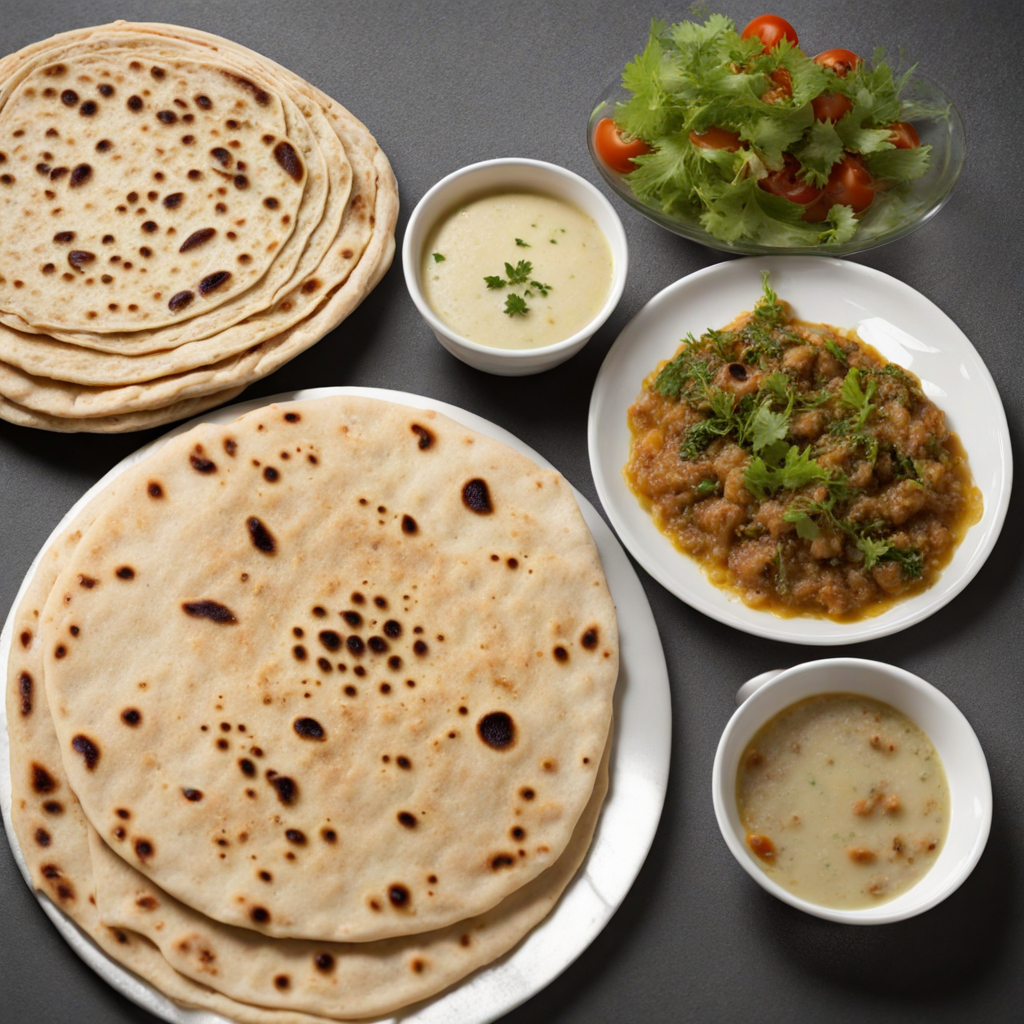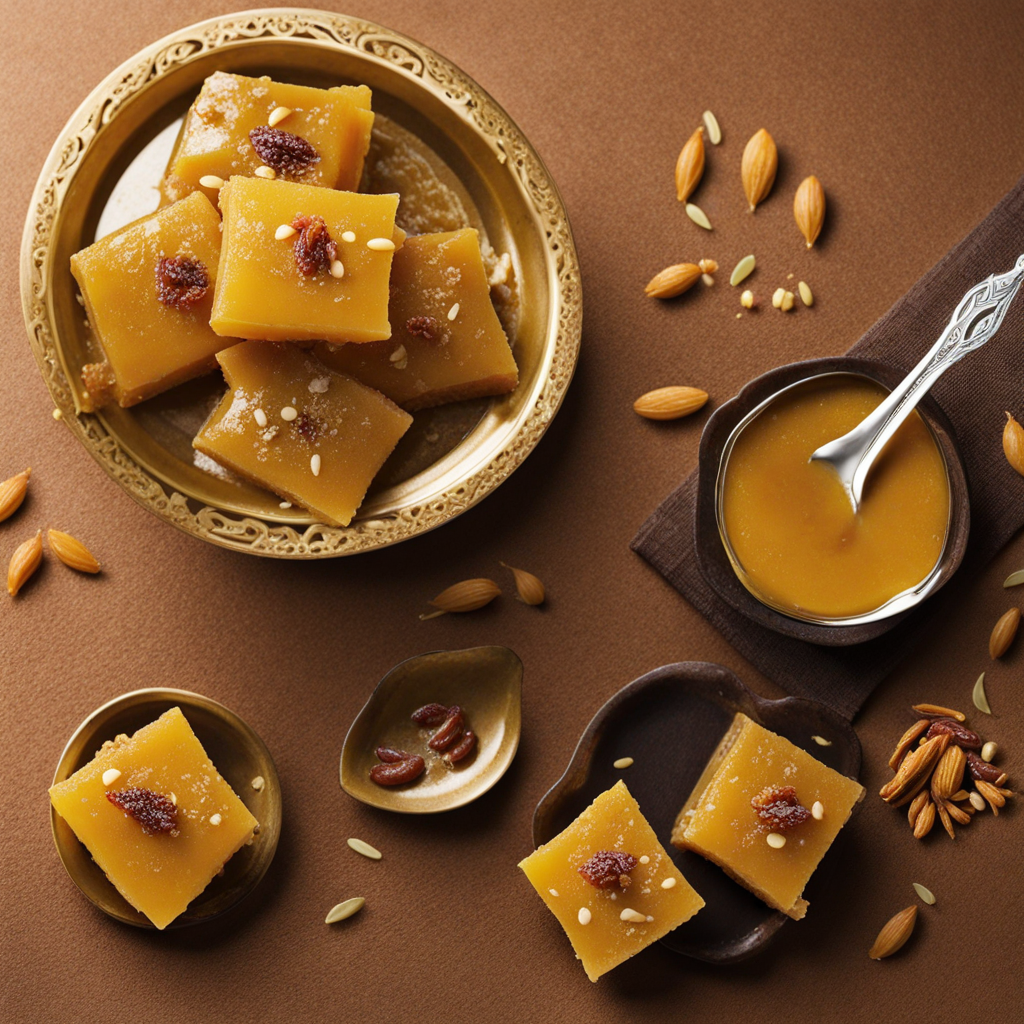Tabbouleh
Tabbouleh is a refreshing and vibrant salad that hails from the Levant region, with its own unique twist in Kuwaiti cuisine. This dish is primarily made with finely chopped parsley, which brings a bright green hue and a fresh flavor that is both invigorating and aromatic. The parsley is complemented by bulgur wheat, adding a delightful texture that contrasts nicely with the crisp vegetables. Tomatoes, cucumbers, and green onions mingle together in this salad, creating a colorful and appetizing presentation that appeals to the eyes as much as the palate. The dressing of Tabbouleh is what elevates it to another level. A generous drizzle of high-quality olive oil and freshly squeezed lemon juice brings a zesty brightness that enhances the natural flavors of the ingredients. The acidity from the lemon cuts through the richness of the olive oil, creating a harmonious balance that makes each bite a burst of freshness. The addition of salt and sometimes a hint of allspice or mint can further enhance the complexity, giving it a distinctive Kuwaiti flair. This dish is not just a salad; it is a celebration of freshness and simplicity, embodying the essence of Kuwaiti dining. Served often as a meze, it pairs beautifully with grilled meats, pita bread, or can be enjoyed on its own as a light meal. Tabbouleh is an invitation to explore the flavors of the Middle East, offering a delightful combination of textures and tastes that can transport you to the bustling souks of Kuwait with every bite.
How It Became This Dish
Origin of Tabouleh Tabouleh, known in Arabic as "تبولة," is a vibrant and refreshing salad that has its roots in the Levant region, which includes modern-day Lebanon, Syria, Jordan, and Palestine. While its precise origins are often debated, it is widely accepted that tabouleh emerged in the mountainous areas of Lebanon and Syria, where the abundance of fresh herbs and vegetables made it a staple. The salad was traditionally prepared by the rural communities, utilizing local ingredients that were readily available. The earliest recorded mentions of tabouleh date back to the 13th century, but it became more popular in the 19th century, particularly among the Lebanese. The dish’s name is derived from the Arabic word "taabil," meaning "to season," which reflects the salad's emphasis on fresh herbs, particularly parsley. In its traditional form, tabouleh consists primarily of finely chopped parsley, tomatoes, mint, onion, and soaked bulgur wheat, all dressed with olive oil, lemon juice, and salt. The balance of flavors and textures is crucial, making it a dish that celebrates the simplicity and freshness of its ingredients. \n\n Cultural Significance In Kuwait, tabouleh holds a special place in the culinary landscape, reflecting the region's rich cultural heritage and its connections to broader Arab traditions. The dish is often served as part of a mezze platter, accompanied by other appetizers such as hummus, baba ghanoush, and stuffed grape leaves. This communal style of dining emphasizes shared experiences and is fundamental to the social fabric of Kuwaiti culture. Tabouleh is not just a dish; it embodies hospitality and the importance of gathering around a table with family and friends. The ingredients of tabouleh also carry cultural significance. Parsley, which is the primary ingredient, symbolizes prosperity and is associated with health and well-being. Its green color resonates with the lush landscapes of the Levant, while the tomatoes and mint add freshness and vibrancy to the dish. The use of olive oil, a staple in Mediterranean cuisine, highlights the region's agricultural practices and the importance of local produce. In Kuwait, where the culinary landscape is influenced by both traditional Bedouin culture and modern cosmopolitan tastes, tabouleh serves as a bridge that connects the past with contemporary dining practices. \n\n Development Over Time As Kuwait became more cosmopolitan, especially during the oil boom of the 20th century, the culinary influences on tabouleh evolved. While the traditional recipe remains popular, variations have emerged that reflect the diverse palate of the Kuwaiti population. Modern interpretations may include additional ingredients such as quinoa or couscous instead of bulgur, or the incorporation of different herbs and spices to cater to contemporary tastes. This adaptability speaks to the resilience of tabouleh as it continues to evolve while maintaining its core essence. Kuwaiti chefs have also embraced the dish, often presenting it in innovative ways that highlight the art of food presentation. Restaurants and cafes across the country now serve tabouleh with a twist, incorporating elements of fusion cuisine or enhancing the dish with local flavors. For instance, some chefs might add pomegranate seeds for a burst of sweetness or use roasted nuts for added texture, creating a unique take on the classic recipe. These modern adaptations not only appeal to a younger generation but also showcase the dish's versatility and relevance in today's culinary scene. \n\n Global Recognition In recent years, tabouleh has gained international recognition as part of the growing interest in Middle Eastern cuisine. As globalization has increased the exchange of culinary traditions, tabouleh has found its way into restaurants and homes around the world. It is often touted as a healthy option, rich in vitamins, minerals, and antioxidants, which has contributed to its popularity among health-conscious consumers. The rise of vegetarianism and veganism has also played a role in tabouleh's expansion, as it serves as a nutritious and flavorful option that aligns with plant-based diets. Culinary festivals and events celebrating Middle Eastern culture have further propelled tabouleh into the global spotlight. Dishes like tabouleh are featured prominently in food tours, cooking classes, and cultural events, allowing people to experience the flavors and traditions of the Levant firsthand. The dish's vibrant colors and fresh ingredients make it visually appealing, capturing the attention of food enthusiasts and chefs alike. \n\n Tabouleh in Contemporary Kuwait Today, tabouleh remains a beloved dish in Kuwait, enjoyed by locals and expatriates alike. It is commonly found on restaurant menus, at family gatherings, and during festive occasions. The dish represents more than just a salad; it embodies a sense of community and tradition that resonates deeply with the Kuwaiti people. In a country that has rapidly modernized, tabouleh serves as a reminder of cultural roots and the importance of preserving culinary heritage. Many Kuwaiti families pass down their tabouleh recipes through generations, ensuring that the preparation methods and family traditions associated with this dish are not lost. Cooking tabouleh at home is often considered a labor of love, requiring careful chopping and seasoning to achieve the perfect balance of flavors. This process creates opportunities for family bonding, as members gather in the kitchen to prepare the dish together, sharing stories and experiences along the way. \n\n Conclusion In summary, tabouleh is more than just a salad; it is a symbol of cultural identity and culinary tradition in Kuwait. Its origins in the Levant, coupled with its significance in communal dining, illustrate the dish's deep-rooted connections to the region's history. As tabouleh continues to evolve and adapt to modern tastes, it remains a cherished part of Kuwaiti cuisine, bridging the gap between the past and the present. Its journey from a rural dish to a global phenomenon showcases the resilience of culinary traditions and their ability to connect people across cultures and generations.
You may like
Discover local flavors from Kuwait







